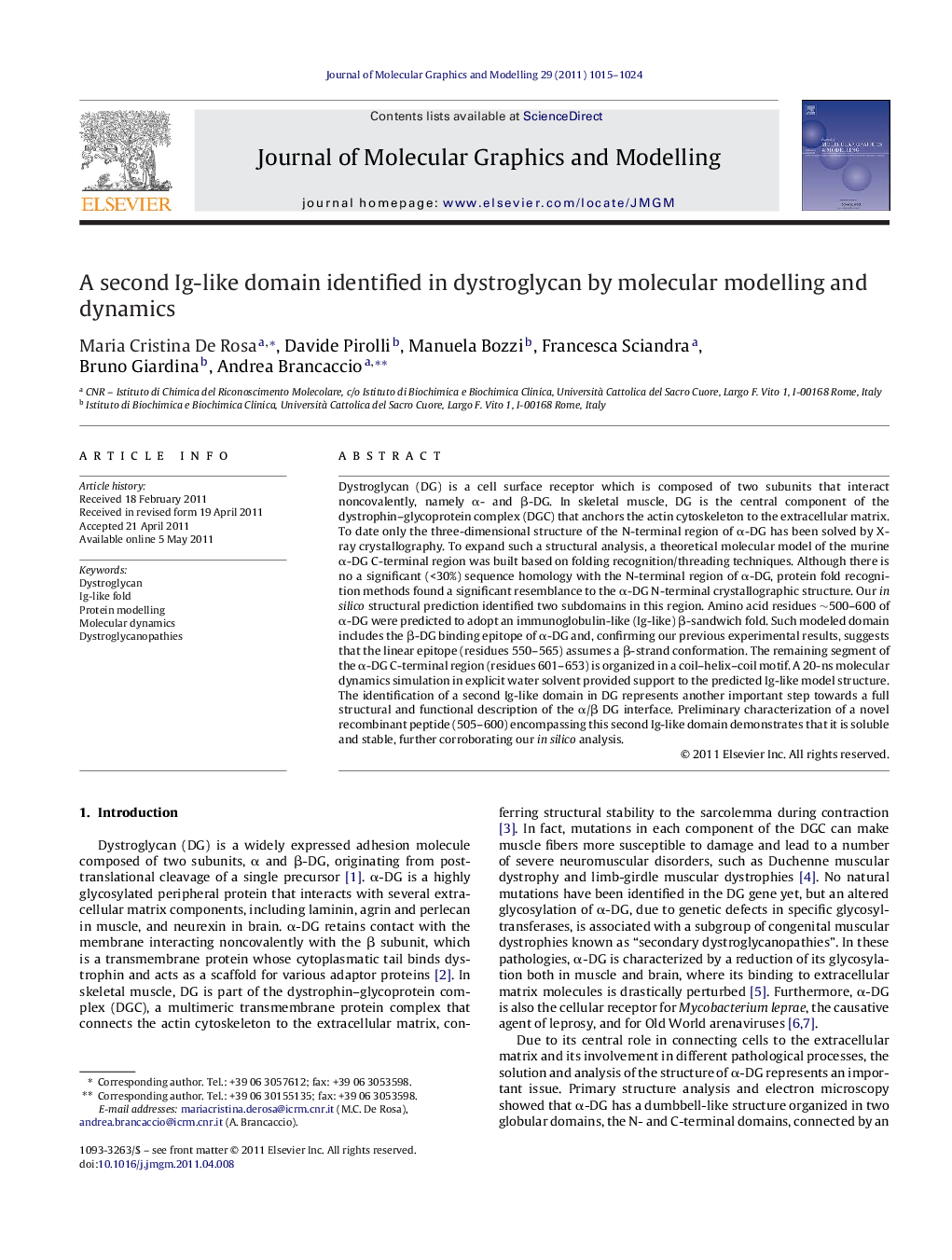| کد مقاله | کد نشریه | سال انتشار | مقاله انگلیسی | نسخه تمام متن |
|---|---|---|---|---|
| 444463 | 692986 | 2011 | 10 صفحه PDF | دانلود رایگان |

Dystroglycan (DG) is a cell surface receptor which is composed of two subunits that interact noncovalently, namely α- and β-DG. In skeletal muscle, DG is the central component of the dystrophin–glycoprotein complex (DGC) that anchors the actin cytoskeleton to the extracellular matrix. To date only the three-dimensional structure of the N-terminal region of α-DG has been solved by X-ray crystallography. To expand such a structural analysis, a theoretical molecular model of the murine α-DG C-terminal region was built based on folding recognition/threading techniques. Although there is no a significant (<30%) sequence homology with the N-terminal region of α-DG, protein fold recognition methods found a significant resemblance to the α-DG N-terminal crystallographic structure. Our in silico structural prediction identified two subdomains in this region. Amino acid residues ∼500–600 of α-DG were predicted to adopt an immunoglobulin-like (Ig-like) β-sandwich fold. Such modeled domain includes the β-DG binding epitope of α-DG and, confirming our previous experimental results, suggests that the linear epitope (residues 550–565) assumes a β-strand conformation. The remaining segment of the α-DG C-terminal region (residues 601–653) is organized in a coil–helix–coil motif. A 20-ns molecular dynamics simulation in explicit water solvent provided support to the predicted Ig-like model structure. The identification of a second Ig-like domain in DG represents another important step towards a full structural and functional description of the α/β DG interface. Preliminary characterization of a novel recombinant peptide (505–600) encompassing this second Ig-like domain demonstrates that it is soluble and stable, further corroborating our in silico analysis.
Figure optionsDownload high-quality image (57 K)Download as PowerPoint slideHighlights
► A computational model of the C-terminal region of α-DG reveals an Ig-like fold.
► Strands β4 and β5 harbour the β-DG binding epitope.
► Mutations within the β5 strand influence the overall stability of the domain.
Journal: Journal of Molecular Graphics and Modelling - Volume 29, Issue 8, August 2011, Pages 1015–1024